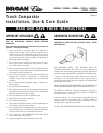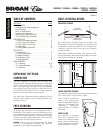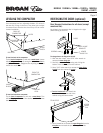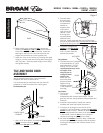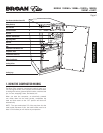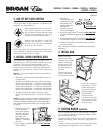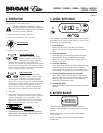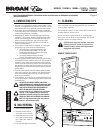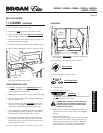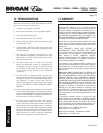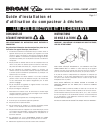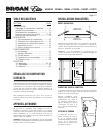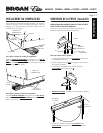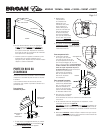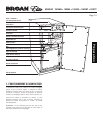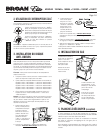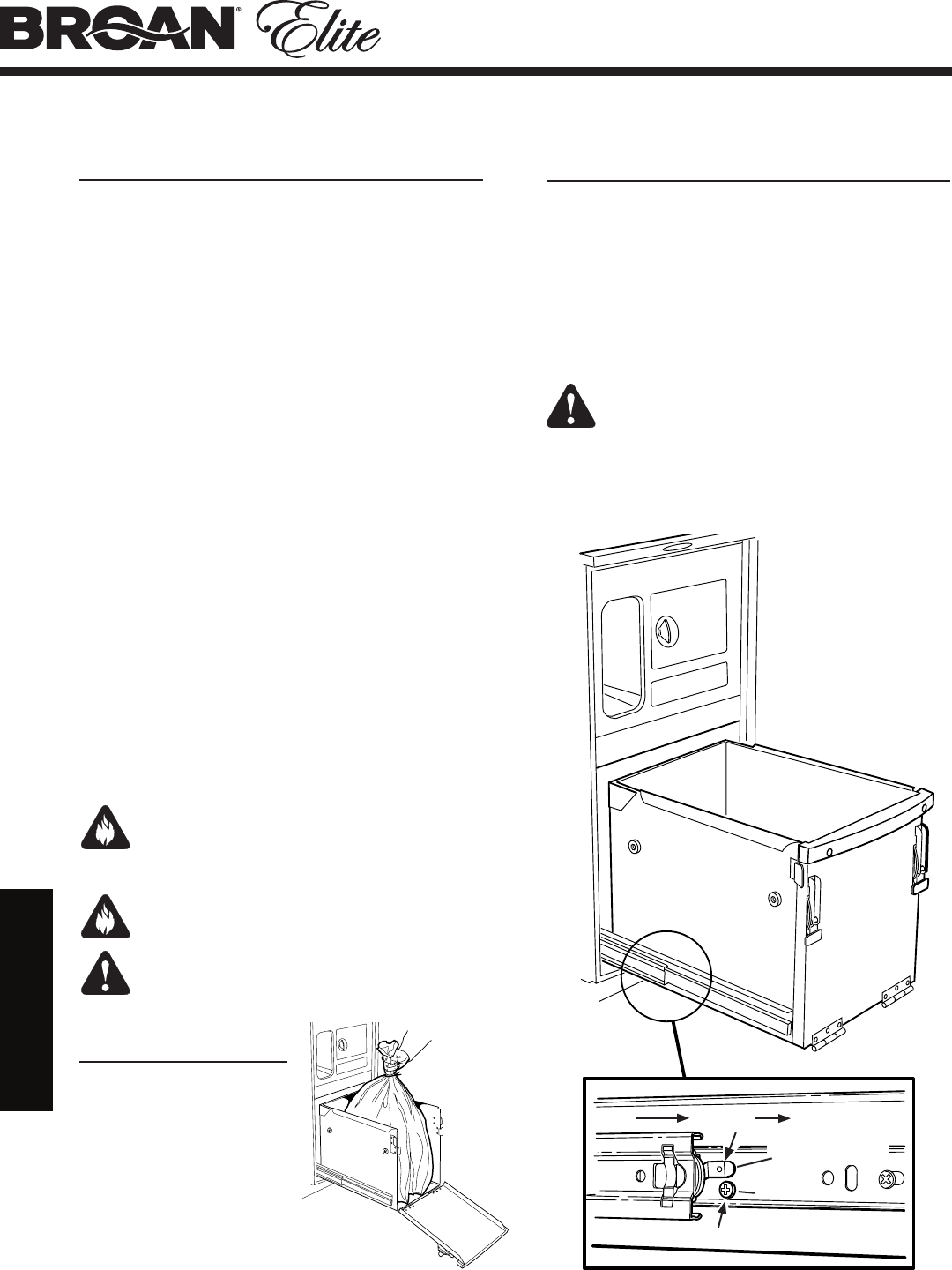
MODELS 15XEWH • 15XEBL • 15XESS • 15XESSA
15XEWT • 15XETT
Page 8
11. CLEANING
Your compactor has been designed with easy access for
cleaning when required.
The interior and exterior of the cabinet are finished with a
durable baked-on enamel finish.
Do not use harsh or gritty cleanser or scouring pads
which may mar the finish of the compactor. Use a mild
detergent solution on these surfaces.
CAUTION: Glass fragments and other sharp trash
pieces may be on or around the surfaces to be
cleaned. Carefully remove these objects before
wiping down any surfaces.
REMOVE TRASH BUCKET
2.
3.
1.
BUCKET SLIDE
RELEASE TAB
SCREW
M a i n t e n an c e
9. COMPACTING TIPS
• Although it is not necessary to compact until the drawer is full or
nearly so, it is suggested that for maximum compaction, you start
the compactor each time a significant amount of trash is added.
• At full stroke, the ram does not travel all the way to the bottom
of the trash bucket. Trash in the bottom 1/3 of the bucket will be
crushed during subsequent compacting.
• Glass bottles can make a loud noise when they break during
compaction. This is normal. Bottles do not always break during
the first cycle. Breaking glass and associated noise may occur
several cycles later depending on type and volume of trash.
• Bottles and large cans compact best when laid flat near the
center of the trash bucket.
• Place a couple of folded sheets of newspaper, or a large paper
grocery bag on top of the load to be compacted when :
compacting large or several glass bottles or jars
(or any items that might shatter). This will help
prevent glass fragments and particles from flying
out of bucket into mechanism.
compacting unwrapped messy food waste.
This will help keep the power ram clean.
• Compacting extreme uneven loads may cause the trash bucket to
shift forward which may cause the door to open and interrupt the
compaction cycle. Gently push and hold door closed to activate
the ram until it returns to the up position. Open the trash bucket
and reposition any objects that may be causing the uneven load.
Close the door and re-activate the compaction cycle by pressing
the start button.
• There are certain types of trash that create exceptionally strong
odors such as raw meat, fish, grapefruit rinds, personal hygiene
items, and disposable diapers. You may not wish to put such
items into your compactor.
• If the compactor will not be used for an extended period of time,
such as during vacation, remove the bag to prevent a build-up of
undesirable odor.
CAUTION: DO NOT COMPACT AEROSOL CANS OR ANY
OTHER CONTAINERS STILL HOLDING OR WHICH HELD TOXIC
CHEMICALS, INSECTICIDES, OR COMBUSTIBLE CONTENTS.
FUMES MAY BE RELEASED THAT ARE HAZARDOUS TO
HEALTH OR MAY RESULT IN FIRE OR EXPLOSION.
Do not put paint, oily rags, lighter fluid cans, paint thinner
cans, etc., in your compactor. Doing so could result in
spontaneous combustion causing a fire and/or explosion.
NEVER PUSH TRASH INTO THE BUCKET WITH HANDS OR
FEET. Trash might contain broken glass, sharp pieces of
metal, etc., which could cause injury.
•
•
10. BAG REMOVAL
1. Slide out trash bucket.
2. Release bucket latches
and lower front of bucket.
3. Unbutton bag from bucket
and close by twisting bag
top. Fasten with twist-tie
provided.
4. Lift and slide bag from bucket.
EXCEPT FOR CLEANING DESCRIBED IN THE FOLLOWING SECTION, ALL SERVICE SHALL BE PERFORMED BY AN AUTHORIZED
SERVICE REPRESENTATIVE.



